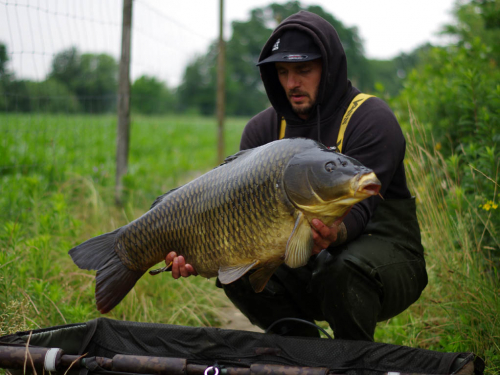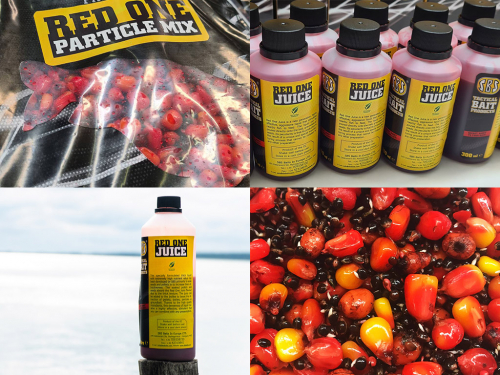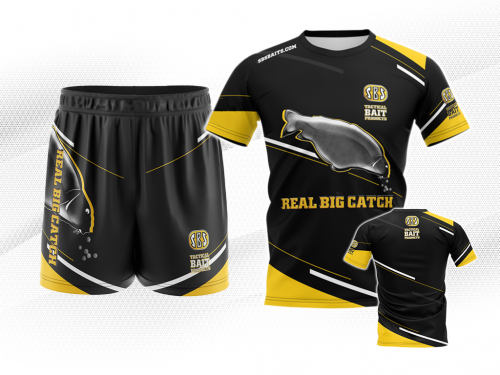Fish care and welfare
In several bankside conversations with carp anglers on the subject of fish welfare, it was clear to me that there is a lot of confusion out there. The debates go on, round and round, and nobody appears to have the finite answers. I may not have all the answers, but I thought that it was a good time to share my thoughts publicly. Here goes.
My initial reaction to fish care and welfare is that I recognise it as an essential and important aspect that, although it has been covered extensively by many of the good and great in angling journalism over many years, it has been lacking in a wider overview. It seemed to me, that the more I considered the topic, the clearer it became that, perhaps, it is far more multi-facetted than one might at first appreciate. For sure, this topic should be covered more succinctly in regard to other aspects beyond the usual level of care. As an old skool carp angler, I strongly believe that it is our fundamental responsibility to ensure that every carp is returned to the water safely. With 35 years of carp angling under my belt, whilst I do not think of myself as a carp-angling guru I can at least draw upon that experience when sharing my thoughts with others.

As carp are most often very long-lived, and as most anglers desire to catch the biggest carp possible, fish care is something that is vitally important to that end. Even if we put ethics to one side for the purpose of this explanation, we really should each do all that we can to ensure that every carp attains a good age/size and in the very best condition that it can be. There is no question that catching a big, but badly mutilated, deformed or battle scarred carp can detract from the enjoyment of the capture… or at least it does when beauty is considered over weight, and for me that is very much the case.


Beyond doubt, fish care runs far beyond simply caring for the carp when we have them on the bank and the period running up until they are released. Of course, that timeframe when they are in our care is a most critical period, but there are also other very important criteria, too, that we should take into consideration. Fish care actually begins long before we even step foot on the bank. From the moment we step into a tackle shop and we base our tactics on the items on offer, we begin to make choices that can seriously threaten the wellbeing of the carp that we intend to catch. Some products - thankfully not too many - are unfortunately substandard and others, to be perfectly honest, are downright dangerous! Obviously, if anyone chose to name and shame these products or indeed the companies that produce them, they would most certainly find themselves in a court case if there is nothing actually illegal in the manufacturing process or in its intended use. With that in mind, if it’s not illegal, it can be produced, sold and used, but that doesn’t make it right.
Just as a ‘for instance’, there are ‘safety clips’ on the market that are anything but safe, and yet these continue to sell in massive numbers and are extensively used by the uninformed masses. Largely, anglers using these unsafe products remain unaware of the pitfalls, and the problem persists because of misplaced trust in the manufacturers and a degree of naivety and/or lack of experience in the purchaser. For each and every experienced angler out there who does know the score, there are several more, inexperienced and novice carp anglers who don’t.

The fact is, there are numerous items currently being sold to unsuspecting anglers as ‘safe’ when they are anything but that, and I’m certain that many of those reading this could draw up a substantial list of such items. Unfortunately, it doesn’t stop there, with tackle; bait too is an area for major consideration, as it is not always (often?) ethically constructed and safe, either for short or long term use. Indeed, it doesn’t end there, with the end-tackle and bait that we select either! The bottom line is that we as individuals each have to be responsible and ensure that everything that we use is safe and fit for purpose… but these considerations also need to extend to the rod and line themselves as they too have an important relevance to fish welfare.
Over the past 35 years there has been a substantial increase in the quality of line, and with the use of braid becoming much more prevalent too this has, in effect, created its own problematic area. There is no escaping the fact that fine lines, those with a very small diameter, are directly responsible for two things. Firstly, fine diameter lines are far more likely to lift scales and/or cut into flesh as a fish is being played, so it is very important to protect the fish from this effect by using larger diameter leaders or tubing. This aspect begs the question, do novices even realise this?
Secondly, the fineness of double strength lines can induce anglers to take a step up in breaking strain – it is easy to understand the misguided logic there: “why use standard profile 20lb line when I can use 40lb double strength line of similar diameter?” ‘Conscience’ is the answer to that question. Carp angling should never be ‘catch at any cost’! The problem is, of course, when these and other such items are in the hands of lesser-experienced anglers - there isn’t a miraculous short cut to experience, and without the benefit of a ‘Carp School’, we all walk the path of slowly gaining experience - and many lessons are learned by the biggest mistakes!
Also, what at one-time was the then accepted standard test curve of rod has increased far beyond what would have been considered acceptable or ‘safe’ back in the 80’s. Rods that are now commonly used in all situations are often around and in excess of 3.5 TC - about double the power of a 1980’s rod! To add to this, in order to balance the line with the TC of rods, the tendency now is to use 15 – 20 kg line, or even greater. This specific ‘upgrading’ to outgun and overpower carp was something that was greatly frowned upon back in the 80’s when 10-15 lb line was the normal choice, and it still is by some old-skool anglers. Back in those days it was common to hear the harshly spoken phrase “fishing with broomsticks and tow rope!” applied to such tactics… And they did/do have a point…. Whatever became of actually playing a carp instead of bullying it into submission? Of course, with these much more powerful rods now in popular use, with stronger, thinner line attached, the more ‘brutal’ anglers are able to be. Unfortunately, that power, transfers down the line to the hook, and the level of pressure that can be applied can be used and abused to the point where mouth damage occurs. Therefore, this set up in the wrong hands, is another big area for concern.
Over the years there has been much talk of ‘safe’ hooks but, to my mind, there is no such thing. Most hooks have always had the potential to cause some degree of damage, but considering the extreme ‘pulling power’ anglers now have at their disposal, every hook carries that potential. ‘Safe’ used to be a concept that only considered the welfare of carp, not a consideration of whether the angler would land it or not! It really does come down to each angler’s conscience, ethics and their individual appraisal of ‘acceptable’ damage. Fine wire hooks are often blamed for mouth damage, and for good reason as, under pressure, they can much more easily slice through flesh due to the thinness of the wire.
However, there have been particular patterns that have been said to be the cause of very bad mouth damage, when in reality, under closer scrutiny and careful consideration, I believe that this was (and still is!) largely due to the manner in which the said hooks were being used. – In the large majority of cases, it was undoubtedly bad angling practices that had rendered such hooks as being labelled ‘brutal’ and ‘lethal’! Mindful selection of hooks is a critical choice to this end, and opting for a fine wire hook when snag fishing, fishing in heavy weed, or in situations where more than average pressure must be placed on the hook-hold, it becomes tantamount to abuse… fished in these circumstances, you have effectively elected to fish with a ‘wide-smile’ inducing, cheese wire!
The question of “barbed or barbless hooks” is one that is always but always raised in angling debates. I can say with clear conviction, that my experiences have proven to me emphatically that barbed hooks, especially micro-barbed, are more fish friendly. Where barbless hooks are concerned (over the years that I used them, thinking and believing that they were more fish friendly) I had multiple experiences where the hook would pop out. This was not because I did anything wrong (I know precisely how to play a fish on barbless hooks) but solely because the hook was free to pivot… and in a prolonged hard fight barbless hooks would often widen the hole in the carps mouth!

As far as I am concerned, I believe that there is nothing safer (less damaging) to the mouth of a carp than a micro-barbed hook, as it is held firmly in place and will not randomly pivot during play. The evidence, for me, was very clear and unless I am forced to use barbless hooks due to a fishery policy, I would not choose to use them. As you might expect, I am a big fan of the SBS Pro-Tackle range of hooks, but please trust me here, that is not out of some false sense of duty, because if I didn’t feel that they are 100% fish friendly, I would not use them! As with all of the SBS Pro-Tackle products, they have been very carefully selected and produced with fish welfare and suitability for purpose firmly in mind. We don’t do half measures at SBS and only the best will do!
As important as I feel they are, the above thoughts and experiences that I have covered are no less or more important than this next subject. - When we arrive at the waterside, the next safety issue that we face is the selection of our fishing spots. Of course, without the benefit of sub-surface knowledge and unless we are very knowledgeable in understanding specific places where it is safe (for the carp) to fish for them, then we will be putting them at risk through our actions. The selection of good but safe areas in which to catch carp carries with it a high level of responsibility for each of us. We should consider whether we are solely selecting this spot, in thick weed or close to snags etc, because we know that we are more likely to induce action or, whether we are taking too much of a risk? In this aspect, as is sadly often the case, we are sometimes immediately guilty of placing more importance on catching carp than we are on fish welfare?

As said, bait is a major consideration in fish care terms, and selection may test the ethics of more than just a few anglers. From ill prepared particles to extremely poor quality boilies, there are plenty out there that, if we were aware, we would choose not to use. Quantities of a poor food source are obviously detrimental to welfare, but thankfully, most carp have a balanced diet and more importantly, a choice! – If your bait is a high impact, instant attractor initially, it may also be a short-lived bait that, once the carp have experienced it, they will quickly learn to avoid in the long term because they will recognise its lack of quality as a food source.





Again, are we actually conscientious enough to consider the impact of using excessive quantities of bait? Rotting bait impacts directly on water quality, and it can cause imbalances to the biodiversity and even in extreme cases, stagnation. Sponsored anglers are hopefully more mindful, and although they have limitless bait at their disposal, they also display the knowledge of their experience in most cases, and know that there are limits of constraint. However, sadly, this is not always the case. After all is said and done, we should not need to be told why it is important to assess the impact of the effects that our tackle has upon carp. Angling ethics are down to the individual, but there is a growing sense of appreciation within the sport for the need of a far greater level of fish care. Far be it from me to criticise any angler, but surely we should all consider our responsibilities and duty of care. We must surely make it our business to carefully consider all aspects of fish welfare and through that avenue, display our respect for them.
-
New Brand Identity at SBS
The well-known yellow-black color scheme will of course remain, but at the same time, you will find a new font and a new logo symbolizing carp fishing on SBS platforms and product packaging, which better expresses the company's profile and identity.
-
Spring through my eyes
Last season I was less active in my fishing, so I decided to start this year as quickly as possible, in early spring. I wanted to trick as many carp as possible, of course take pictures and release them back to their home as soon as possible.
-
New products for 2022
In our work, the question arises countless times how competition is related to product development? This is when Formula 1 teams come to mind, where racing and the desire to win make engineers innovate continuously, having ...
-
New Releases in SBS Clothing!
We are happy to inform you, that our new SBS Competition T-Shirts and Shorts have been launched!